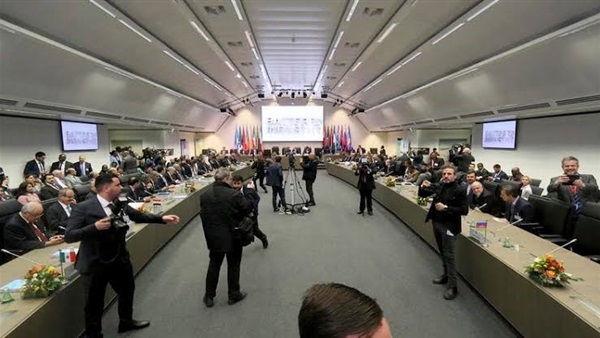OPEC meeting ends without statement amid expectations of more output cuts

OPEC ministers finished a marathon meeting on oil
markets Thursday night amid expectations that the exporters’ club will announce
deeper cuts in supply on Friday.
Ministers remained tight-lipped after the
ministerial session ended soon after 11pm at the group’s Vienna headquarters,
with Saudi Energy Minister Prince Abdulaziz bin Salman telling reporters: “The
OPEC meeting is finished. We will have a meeting tomorrow and everything will
become clear for you.”
He was referring to a meeting scheduled for Friday,
where OPEC ministers will try to nail down output cuts to be shared with
exporters outside the group, including Russia, Kazakhstan and Oman.
Earlier in the day, a Joint Ministerial Monitoring
Committee recommended that OPEC and allied exporting countries remove another
500,000 barrels per day from the world market, according to Russia’s Energy
Minister Aleksander Novak.
OPEC and friends, known as OPEC+, are grappling with
the prospect of a wave of extra barrels from rival producers expected to hit
the market next year. They have officially maintained an agreement to reduce
exports by 1.2 million barrels per day for almost three years, but compliance
has been patchy, with Saudi Arabia taking a highly disciplined approach, but
notable exceptions in Iraq, Nigeria and Russia, which are all pumping above
their quotas.
North Sea Brent crude oil futures held at around
$63.21 per barrel late on Thursday. OPEC+ has managed to keep prices relatively
stable, between $50 and $75 a barrel. But the market is expected to see a wave
of new supply from producers outside OPEC+ next year.
The US alone, which has seen explosive output growth
thanks to innovations in drilling technology, is expected to add more than a
million barrels per day next year, having added more than a million in the past
12 months. With more barrels expected from Brazil, Norway and Guyana, countries
outside OPEC+ are due to add a whopping 2.3 million barrels a day next year,
according to the International Energy Agency. This is more than double the
expected growth in demand for oil and so OPEC+ is seeking to adjust to keep
prices from falling.







